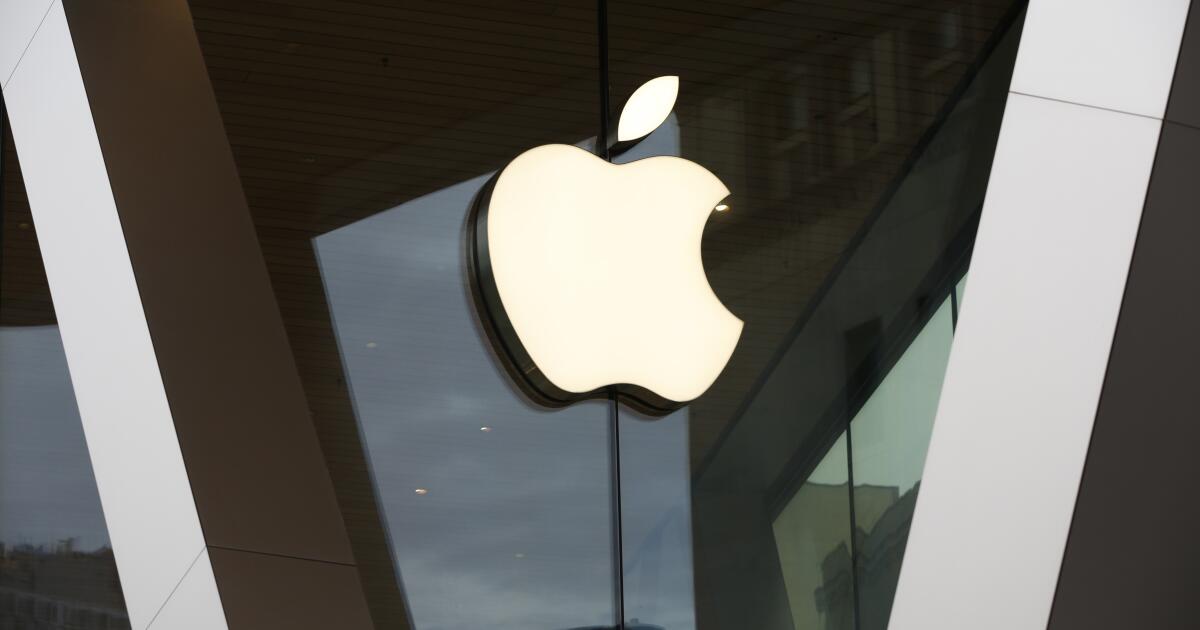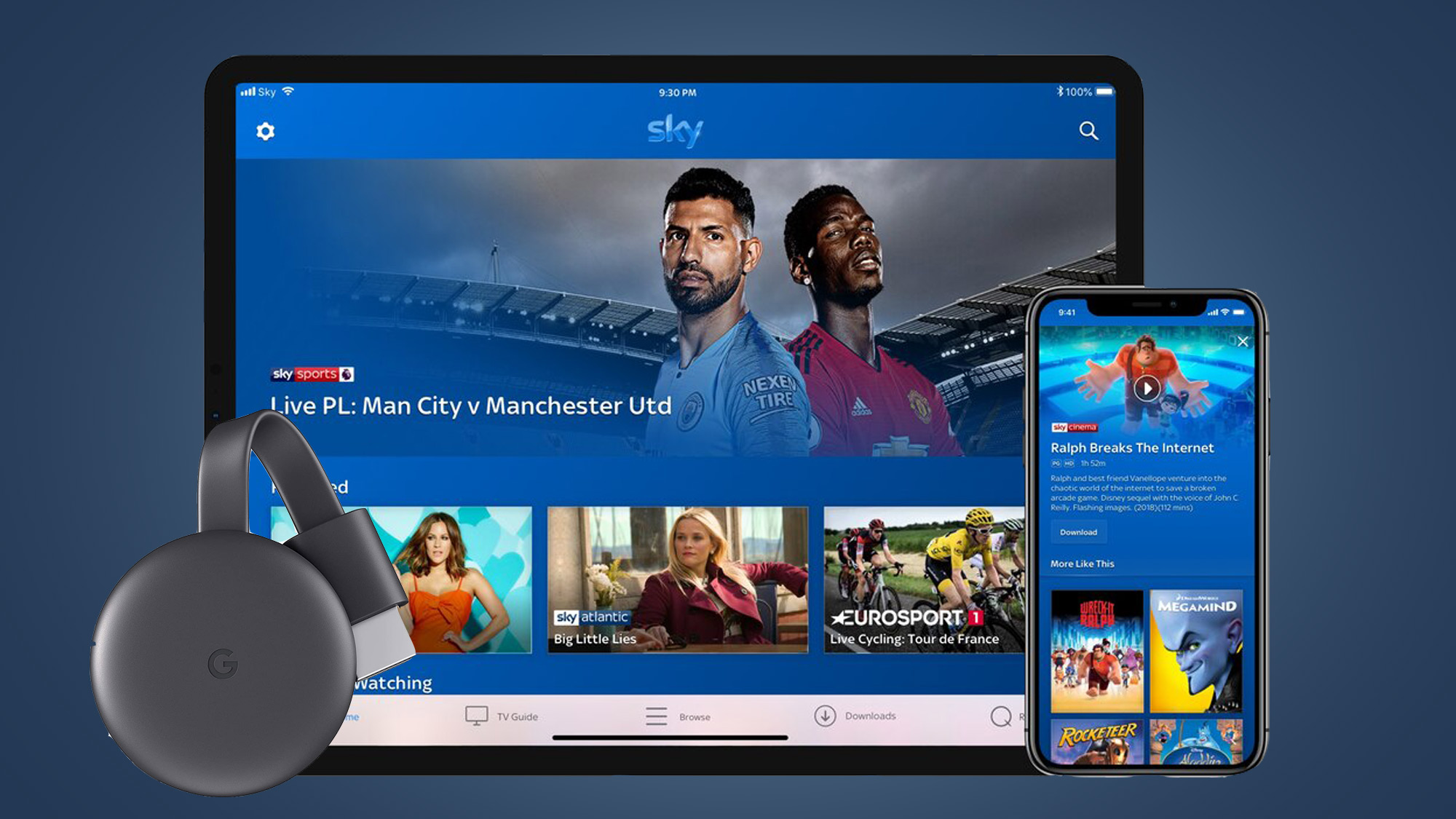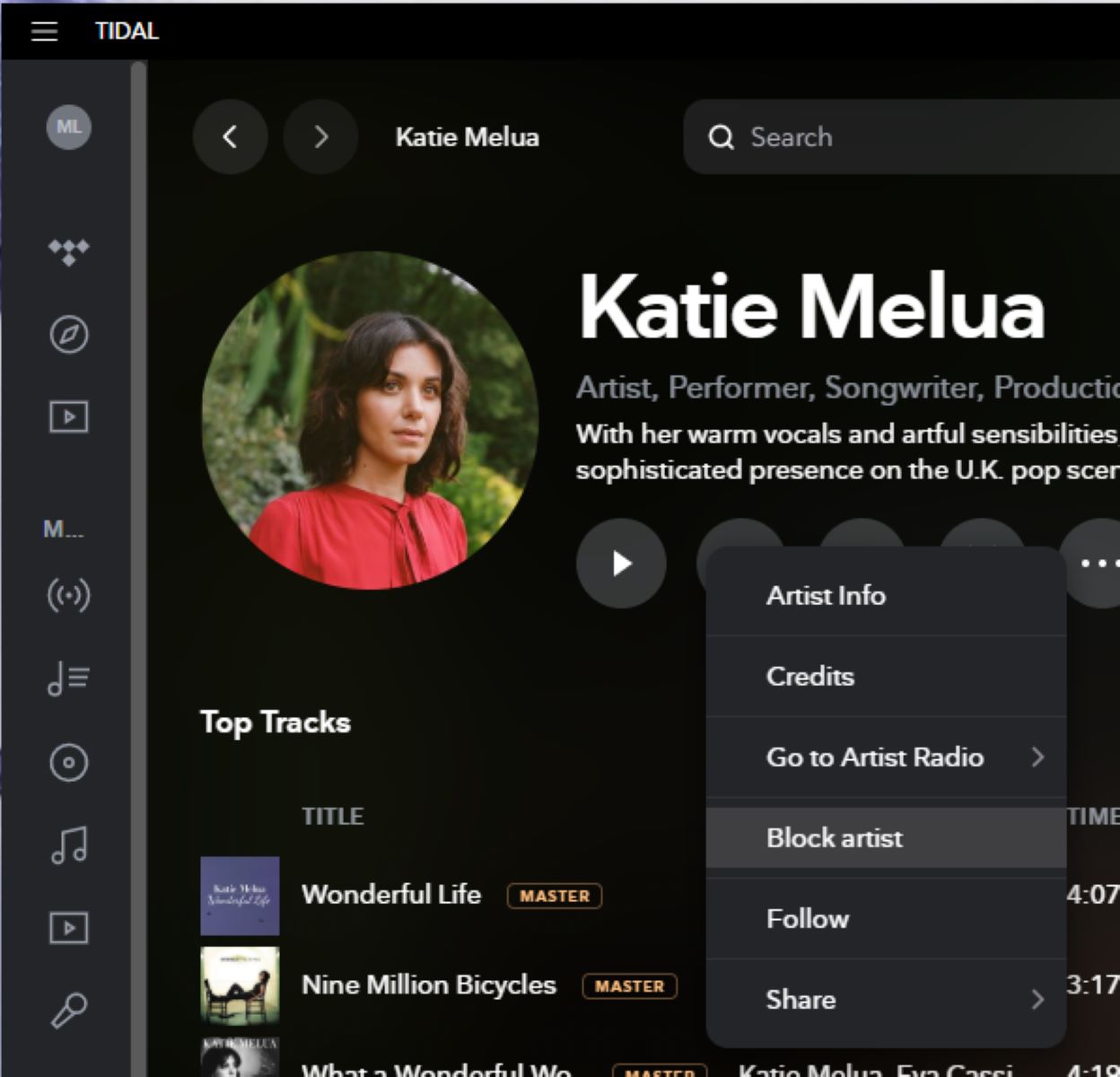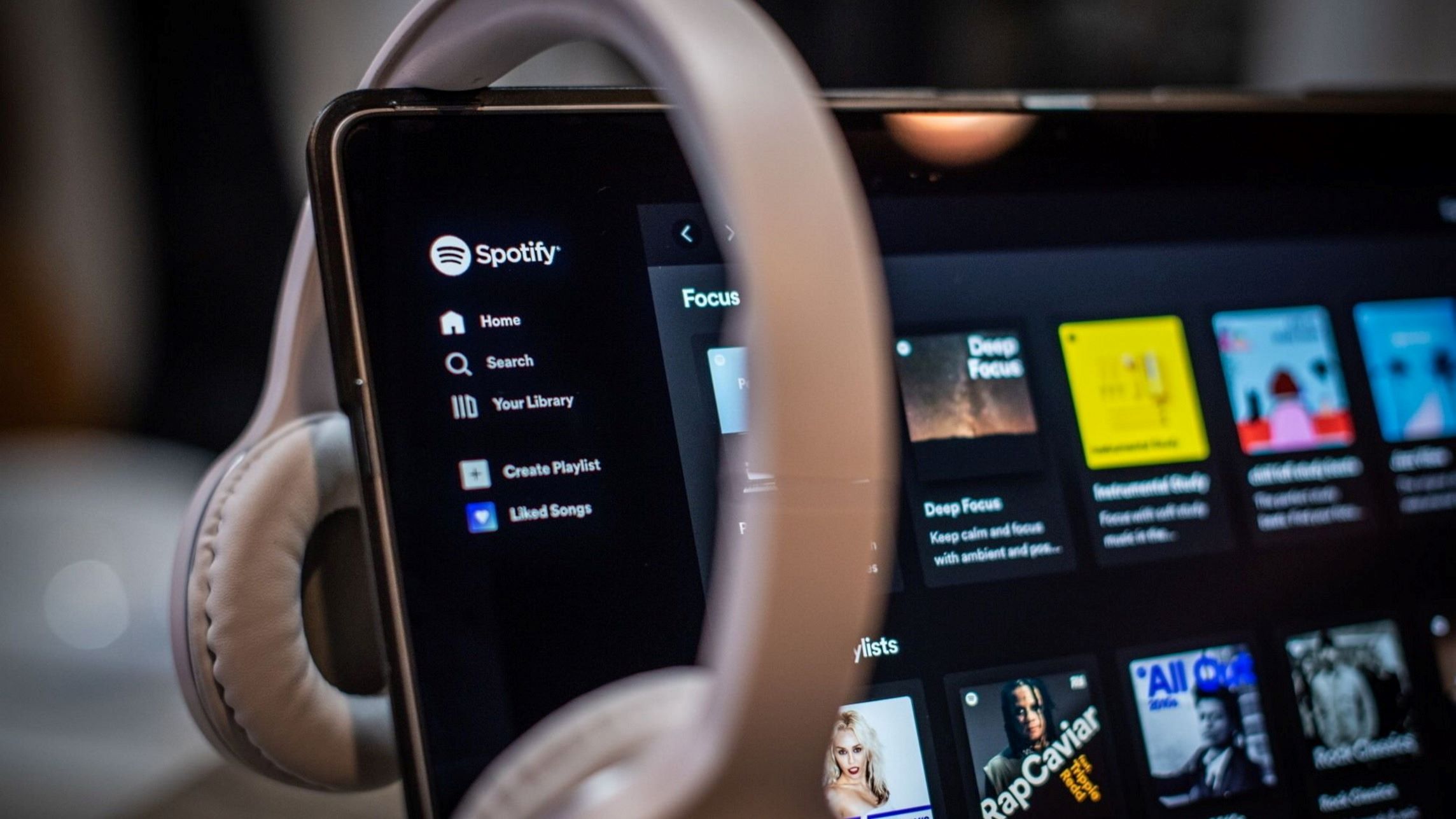Introduction
As music enthusiasts, we constantly search for new songs and artists that align with our unique preferences. With the rise of music streaming platforms like Spotify, we have access to an extensive library of music at our fingertips. But how well does Spotify really know our tastes? How accurate are its recommendations?
Spotify’s recommendation algorithm is designed to analyze various factors such as your listening habits, playlists, and artist choices. Based on this information, it generates personalized playlists like “Discover Weekly” and suggests similar artists for you to explore. The aim is to provide a seamless listening experience by introducing you to new music you might enjoy. However, the question remains: just how accurate are these recommendations?
In this article, we will dive deep into the algorithm behind Spotify’s recommendations and explore the accuracy of its personalized playlists. We will dissect the popular “Discover Weekly” playlist and uncover its flaws. Additionally, we will analyze the “similar artists” feature and Spotify’s genre assignments to understand the reasons behind the platform’s occasional missteps.
By understanding the nuances of Spotify’s recommendation algorithm, we can better evaluate its suggestions and make more informed choices about the music we discover and listen to. So, let’s embark on this journey to uncover the strengths and weaknesses of Spotify’s personalized playlists.
The Algorithm Behind Spotify’s Recommendations
Behind the scenes, Spotify’s recommendation algorithm utilizes a combination of sophisticated techniques to analyze and understand your music taste. It employs machine learning and collaborative filtering to compare your listening behavior with that of millions of other users. This allows Spotify to make personalized recommendations based on similarities in music preferences.
The algorithm takes into account various factors, including the genres, artists, and songs you frequently listen to, as well as the ones you have explicitly “liked” or added to your playlists. It also considers the popularity and relevance of the music within the broader Spotify community.
One of the key techniques used by Spotify is collaborative filtering. It analyzes the listening patterns of other users who have similar tastes to yours and identifies commonalities in the music they enjoy. By finding these musical intersections, Spotify can suggest songs and artists that you may not have discovered on your own.
Additionally, Spotify’s algorithm incorporates natural language processing to extract information from user-generated content, such as song descriptions, reviews, and comments. This helps improve the accuracy of recommendations by considering not only your musical preferences but also your broader interests and sentiments.
It’s important to note that the algorithm is continuously learning and adapting. Spotify tracks the songs you listen to, the ones you skip, and even the ones you repeat. This data is fed back into the system to refine and enhance the recommendations it provides to you over time.
While the algorithm is undoubtedly complex, its goal is simple: to curate a personalized music experience that keeps users engaged and satisfied. However, despite its sophistication, the algorithm is not without its limitations and occasional errors, which we will explore in the following sections of this article.
The Accuracy of Your Personalized Playlists
One of the primary ways Spotify customizes your music experience is through personalized playlists like “Discover Weekly.” These playlists are generated based on your listening habits and the algorithm’s analysis of your musical preferences. However, the accuracy of these personalized playlists can vary from user to user.
For some users, the personalized playlists are incredibly accurate, introducing them to new songs and artists that align perfectly with their tastes. These users often find themselves pleasantly surprised by the spot-on recommendations and the discovery of hidden gems within the playlists.
On the other hand, there are users who feel that their personalized playlists miss the mark altogether. The songs suggested may not resonate with their preferences or may seem completely unrelated to their musical tastes.
One reason for the varying accuracy of personalized playlists is the complexity of individual music tastes. Users might enjoy a wide range of genres and artists, making it challenging for the algorithm to capture the full spectrum of their preferences. For example, if a user enjoys both classical symphonies and modern pop hits, their personalized playlist might struggle to strike a balance between the two genres.
Another factor influencing the accuracy of personalized playlists is the diversity of a user’s listening habits. If you primarily listen to a specific type of music, such as rock or hip-hop, the algorithm might have a narrower pool of data to work with, resulting in less diverse recommendations. Conversely, users with eclectic listening habits might find their personalized playlists more accurately reflect their diverse tastes.
Furthermore, the accuracy of personalized playlists can also be affected by the user’s engagement with the platform. If you frequently skip songs or only listen to a small portion of a track, Spotify might struggle to accurately gauge your preferences, leading to less precise recommendations. Similarly, if you tend to repeat the same songs or artists, the algorithm might focus on those specific preferences and overlook potential recommendations outside of your comfort zone.
While Spotify’s personalized playlists can be hit or miss, it’s important to remember that the algorithm is constantly learning and evolving. By providing feedback through your listening behavior, liking tracks, and adding songs to your playlists, you contribute to the refinement of the algorithm, potentially enhancing the accuracy of future recommendations.
Exploring the Discover Weekly Playlist
One of Spotify’s most popular personalized playlists is “Discover Weekly.” Released every Monday, this playlist aims to introduce users to new songs and artists based on their listening history and preferences.
Opening up the Discover Weekly playlist, you’ll find a curated selection of tracks that may pique your interest. These songs are not chosen randomly; they are meticulously selected by Spotify’s algorithm, which takes into account your past listening habits, liked songs, and saved playlists.
The Discover Weekly playlist operates on the principle of serendipity, offering a blend of familiar favorites and exciting discoveries. It’s meant to surprise and delight users, often exposing them to genres or artists they wouldn’t typically explore on their own.
As you navigate through the playlist, you may notice that the order of the songs is not random either. Spotify arranges the tracks in a way that creates a smooth and enjoyable listening experience. The algorithm considers factors such as tempo, mood, and genre to create a cohesive flow of music.
Furthermore, the Discover Weekly playlist is dynamic and evolves based on your listening behavior. As you engage with the playlist, liking or skipping songs, Spotify takes note of your preferences and adjusts future recommendations accordingly. The more you interact with the playlist, the better it becomes at understanding and predicting your music taste.
However, it’s important to remember that the Discover Weekly playlist is not infallible. It may occasionally miss the mark or include tracks that don’t quite align with your preferences. This is normal as the algorithm tries to strike a balance between introducing you to new music and staying true to your established tastes.
Despite its limitations, the Discover Weekly playlist remains an excellent tool for music discovery. It has helped countless users uncover hidden musical gems and expand their horizons. By exploring the playlist and embracing the serendipity it offers, you may find yourself immersed in a whole new world of music that resonates deeply with your soul.
Unveiling Discover Weekly’s Flaws
While the Discover Weekly playlist is a fantastic feature for music discovery, it is not without its flaws. Understanding these limitations can help set realistic expectations and shed light on why the personalized recommendations may not always align perfectly with your preferences.
One common flaw is the occasional repetition of songs or artists. Despite its vast music library, Spotify’s algorithm can sometimes get stuck in a loop, repeatedly suggesting songs or artists you have already listened to or liked. This can be frustrating for users seeking fresh recommendations.
Another flaw lies in the algorithm’s sensitivity to temporary listening preferences. Suppose you momentarily deviate from your usual taste and experiment with different genres or artists. In that case, the algorithm, which heavily relies on your listening history, may erroneously assume that your temporary preferences represent your overall long-term taste. Consequently, the playlist may start featuring songs that don’t resonate with you.
Furthermore, Discover Weekly’s dependence on user interaction can also lead to biased recommendations. If you consistently skip songs within the playlist without providing feedback or indicating your preferences through likes or saves, the algorithm may struggle to accurately understand your taste, resulting in less relevant suggestions in the future.
It’s worth noting that the algorithm’s inability to interpret the deeper emotional connection users have with certain songs or artists is another limitation. While Spotify’s algorithm focuses on patterns and trends in listening behavior, it may not fully capture the subtle nuances of a user’s preferences, such as personal memories associated with specific songs or the emotional resonance they evoke.
Despite these flaws, it’s important to remember that the Discover Weekly playlist is a product of an ever-evolving algorithm that continuously learns and adapts. As Spotify collects more data on your music preferences and refines its recommendations, these flaws are likely to diminish over time.
To mitigate some of these flaws and improve the accuracy of the Discover Weekly playlist, it’s helpful to actively engage with the recommendations. Liking and saving songs that resonate with you, exploring related artists, and providing feedback through interactions will help the algorithm better understand your preferences and provide more accurate and enjoyable recommendations.
Understanding the Reasons Behind the Inaccurate Suggestions
While Spotify’s recommendation algorithm works diligently to curate personalized playlists, there are instances where the suggestions may not align with your preferences. To understand the reasons behind these occasional inaccuracies, let’s delve into some of the key factors influencing Spotify’s recommendations.
One factor contributing to inaccurate suggestions is the reliance on collaborative filtering and the limitations of this technique. Collaborative filtering analyzes the listening habits of other users with similar tastes to provide recommendations. However, this approach may overlook unique preferences or obscure artists who have yet to reach broader popularity. As a result, Spotify’s algorithm may miss out on suggesting truly niche or undiscovered music.
Another reason for inaccurate suggestions lies in the interpretation of user behavior. Spotify’s algorithm tracks various actions, such as skipping or repeating songs, to understand your preferences. However, these actions can sometimes be misleading indicators of your true music taste. For example, you may skip a song not because you dislike it, but because you’re simply not in the mood for it at that particular moment.
Inaccurate suggestions can also arise from the inherent challenge of quantifying subjective musical preferences. Music is a profoundly personal and emotional experience, and it can be challenging to capture the complexity of individual tastes through algorithmic analysis alone. Spotify’s algorithm primarily focuses on surface-level characteristics, such as genres or similar artists, which may not fully encapsulate the intricacies of your unique music taste.
Additionally, Spotify’s recommendation algorithm is influenced by popular trends and the overall listening habits of the larger user base. While this ensures a certain level of familiarity and accessibility, it may result in suggestions that align more with popular preferences rather than your individual taste. This can be particularly evident when the algorithm heavily emphasizes popular mainstream artists or genres.
Furthermore, the accuracy of recommendations can be affected by external factors beyond Spotify’s control. Algorithmic bias, limited availability of certain artists or genres on the platform, and the inherent limitations of data analysis can all impact the accuracy of suggestions.
Despite these challenges, Spotify is continuously working to improve its recommendation system. The company invests in research and development to refine algorithms, gather more comprehensive data, and incorporate user feedback to enhance the accuracy and personalization of recommendations.
Understanding these reasons behind occasional inaccuracies can help manage expectations and approach Spotify’s recommendations with a critical but open mind. By actively exploring various features, providing feedback, and engaging with the platform, users can contribute to the improvement of the algorithm and tailor the recommendations more closely to their musical preferences.
The Influence of User Behavior on Recommendations
When it comes to personalized recommendations on Spotify, user behavior plays a significant role in shaping the suggestions you receive. The algorithm closely monitors your interactions with the platform and adjusts its recommendations based on your actions. Understanding the influence of user behavior can provide insights into how Spotify tailors its suggestions and how you can actively participate in shaping your music discovery experience.
One crucial aspect of user behavior is the act of liking or adding songs to playlists. When you express your preference for a particular song, artist, or genre, Spotify’s algorithm takes note and incorporates those preferences into its recommendations. By marking songs as liked or saving them to playlists, you provide signals to the algorithm, indicating your enjoyment of specific musical elements or styles.
Furthermore, skipping or repeating songs also informs the algorithm about your preferences. If you consistently skip songs, Spotify’s algorithm might interpret it as a signal that the suggested tracks are not aligned with your taste, and it will adjust future recommendations accordingly. Conversely, if you frequently repeat songs, the algorithm may prioritize those tracks in order to provide a more enjoyable listening experience.
The length of time you spend listening to a song can also influence recommendations. Spotify’s algorithm considers songs that you listen to in their entirety as a strong indicator of your interest. If you consistently listen to certain songs or artists from start to finish, it suggests a strong affinity for those particular musical choices.
Collaborative playlists and user-generated playlists can also impact the recommendations you receive. When you create and share playlists with others, Spotify’s algorithm takes into account the collective listening patterns of all users who engage with that playlist. This indirectly influences the suggestions made to each individual listener, as the algorithm picks up on trends and similarities among playlist collaborators.
Engagement with Spotify’s radio feature is another significant factor. When you listen to artist or song-based radio stations, the algorithm pays attention to the choices you make within those stations. It notes the tracks you like or dislike and uses that information to refine your personalized music recommendations.
It’s important to note that user behavior is not the sole factor dictating recommendations. Spotify’s algorithm also considers broader trends and similarities among users with similar music tastes. By aggregating and analyzing large amounts of user data, Spotify can identify patterns and make recommendations that align with wider preferences.
Understanding the influence of your behavior on recommendations can empower you to be an active participant in shaping your music discovery experience. By liking songs, exploring different genres, and engaging with the platform’s features, you provide valuable feedback to Spotify’s algorithm, allowing it to refine its recommendations and offer you a more personalized and enjoyable listening journey.
The Impact of Skipping and Repeating Songs
When it comes to personalized music recommendations on Spotify, the act of skipping or repeating songs plays a significant role in influencing the suggestions you receive. Your skipping and repeating behaviour sends signals to Spotify’s algorithm, helping it understand your preferences and tailor its recommendations accordingly.
Skipping songs can indicate to the algorithm that the suggested track does not align with your musical taste. If you consistently skip certain songs or artists, the algorithm takes note and adjusts future recommendations accordingly. This feature is beneficial for fine-tuning your recommendations and ensuring that you are presented with music that resonates with your preferences.
However, it’s worth noting that the algorithm also considers the reason behind the skips. If you skip a song due to temporary mood or situational preferences rather than a dislike for the track itself, the algorithm may interpret it as a different signal. Spotify’s algorithm continuously learns and adapts, aiming to understand the context behind your actions to provide more accurate recommendations.
On the other hand, repeating songs can have a different impact on the algorithm’s recommendations. When you repeat a song, it signals a strong affinity for that particular track. Spotify’s algorithm takes note of this behaviour and considers it as a strong indicator of your personal preferences. Repeating songs can influence the algorithm to prioritize similar tracks or artists in its recommendations, aiming to deliver an enjoyable and familiar listening experience.
However, it’s important to strike a balance between exploring new music and indulging in your favorite tracks. Over-repetition of a limited set of songs or artists can potentially limit the diversity of recommendations, as the algorithm may focus more on delivering similar content rather than introducing you to fresh and undiscovered music.
Spotify’s algorithm doesn’t solely rely on skips and repeats, but combines them with other data points such as your liked songs, saved playlists, and overall listening history. By considering multiple factors, the algorithm aims to create a holistic understanding of your music preferences and provide personalized recommendations that align with your unique taste.
It’s worth emphasizing that the impact of skipping and repeating songs on recommendations is not limited to just the Discover Weekly playlist. These actions influence the algorithm’s suggestions across various personalized playlists and features, such as the “Made for You” collections and “Your Daily Mixes.”
By actively engaging with Spotify’s platform and utilizing the skip and repeat features thoughtfully, you can shape your music discovery experience and help the algorithm better understand your preferences. Providing feedback through these actions allows Spotify to fine-tune its recommendations, ultimately delivering a more satisfying and tailored listening journey.
Analyzing the “Similar Artists” Feature
Spotify’s “Similar Artists” feature is designed to expand your music horizons and introduce you to new artists who share similar musical styles or characteristics with the ones you already enjoy. This feature aims to provide recommendations based on the connections and patterns observed in users’ listening habits.
When you explore the “Similar Artists” section on an artist’s profile, you will find a list of recommended artists that are deemed similar based on various factors. Spotify’s algorithm analyzes the musical attributes, genre categorizations, and listening patterns of users to identify these similarities.
One approach used by the algorithm is collaborative filtering, which compares the listening behavior of different users to identify patterns of similarity. By grouping users who frequently listen to specific artists together, Spotify can suggest “Similar Artists” that have wide appeal within those listening communities.
Additionally, the algorithm also considers shared characteristics such as genre, instrumentation, lyrical themes, or sonic qualities to make these recommendations. By utilizing natural language processing and data analysis, Spotify can identify commonalities between different artists and suggest those that align within these characteristics.
However, it’s important to note that the “Similar Artists” feature may not always be perfect. The algorithm’s understanding of similarity is based on patterns observed in user listening behavior, which can be subjective and influenced by the larger user base. The recommendations might reflect the broader trends rather than capturing the true essence or nuances of an artist’s unique sound.
Furthermore, the “Similar Artists” feature does not account for personal tastes and preferences that extend beyond genre or sonic characteristics. It may not capture the intricacies of the emotional connection or personal resonance you have with a specific artist. Therefore, while it can be an excellent starting point for discovering new music, it’s always worth exploring further and making your own judgment.
Another consideration is that the “Similar Artists” feature might favor more popular or mainstream artists within certain genres. This can result in recommendations that lean towards well-known names, potentially overlooking lesser-known or independent artists who may be a perfect fit for your taste.
Despite these limitations, the “Similar Artists” feature remains a valuable tool for music exploration. It offers a convenient starting point for discovering new artists and genres that align with your current preferences. By actively engaging with the suggested artists, exploring their discographies, and letting your own musical curiosity guide you, you can uncover hidden gems and expand your music library beyond the surface-level recommendations.
Evaluating Spotify’s Genre Assignments
Genres play a crucial role in how we categorize and discover music, and Spotify relies heavily on genre assignments to curate personalized recommendations. The platform’s algorithm employs various techniques to assign genres to tracks, albums, and artists. While Spotify’s genre assignments can be helpful for navigating its vast library, they are not without their limitations.
One of the challenges in genre assignment is the inherent complexity and subjectivity of music genres. Genres are not distinctly defined categories but rather fluid and evolving concepts that encompass a wide range of styles and subgenres. This subjectivity makes it challenging for any algorithm to accurately capture the full breadth of an artist’s musical identity.
Spotify utilizes a combination of manual curation and algorithmic analysis to assign genres. Human curators play a role in identifying and classifying music into genres based on their expertise and knowledge. Additionally, the algorithm analyzes various musical characteristics such as instrumentation, tempo, and sonic qualities to determine genre assignments.
Despite these efforts, there can be discrepancies and inaccuracies in Spotify’s genre assignments. The algorithm might struggle to capture the intricacies and nuances of certain subgenres or experimental musical styles, often leading to broad categorizations or mislabelings. This can result in recommendations that are not truly aligned with your specific tastes and preferences.
Furthermore, genre assignments can be influenced by popularity and commercial considerations. Certain genres or subgenres that are more popular or mainstream may receive more attention and recognition, while niche or underground genres may be overlooked or underrepresented in Spotify’s assignments.
Additionally, the subjective nature of genre preferences can also play a role. Users with diverse musical tastes might find it challenging to navigate the limitations of genre assignments, as their preferences may span multiple genres or defy categorization altogether.
Despite these shortcomings, Spotify continues to improve genre assignments through user feedback and data analysis. By actively engaging with the platform and providing feedback on genre accuracy, users can help Spotify not only refine its genre assignments but also further enhance the accuracy of personalized recommendations.
While Spotify’s genre assignments serve as a useful tool for exploring different styles and discovering new music, it’s important to approach them with an open mind and understand their limitations. It’s advisable to use genres as a starting point rather than strict boundaries, and to explore subgenres, related artists, and user-generated playlists to further refine your music discovery and find the perfect sound for your unique taste.
Why Spotify Fails to Detect Your True Music Taste
Despite its best efforts, Spotify sometimes fails to fully capture and detect your true music taste. While the platform’s algorithm is designed to provide personalized recommendations, there are several reasons why it may fall short in accurately understanding your preferences.
One reason is the inherent complexity and diversity of individual music tastes. Our musical preferences are influenced by a myriad of factors, including personal experiences, cultural background, and emotional associations. Spotify’s algorithm primarily relies on surface-level data, such as listening history and genre assignments, which may not encapsulate the complete depth and intricacy of your musical identity.
Furthermore, Spotify’s recommendations are based on patterns observed within the larger user base. While this approach ensures a degree of familiarity and accessibility, it can result in suggestions that align more with popular preferences rather than your individual taste. This is particularly evident in recommendations for mainstream or chart-topping artists, where Spotify tends to prioritize wider audience appeal over niche or obscure selections.
The limited availability of certain artists or genres on the platform can also contribute to Spotify’s failure to detect your true music taste. While the platform boasts an extensive library, it may not encompass every artist or subgenre that aligns perfectly with your preferences. This can lead to recommendations that miss the mark or don’t fully capture the breadth of your musical interests.
Another factor is the struggle to capture the emotional and personal connection we have with certain songs or artists. Music is deeply intertwined with our memories, emotions, and experiences, making it challenging for any algorithm to fully comprehend the subjective and intangible aspects of our musical preferences. Spotify’s algorithm primarily focuses on quantifiable data points and may not fully capture the deeper emotional resonance we have with specific tracks.
Additionally, user behavior and interactions with the platform can also contribute to the algorithm’s failure to detect your true music taste. If you frequently skip songs, play tracks on shuffle mode, or actively explore new genres, Spotify may struggle to accurately gauge your preferences and provide tailored recommendations. It is important to note that the algorithm needs time and active engagement to learn and adapt to your evolving tastes.
Despite these limitations, Spotify is continuously refining its algorithm and exploring ways to improve music recommendations. By actively engaging with the platform, providing feedback, liking songs, and exploring different genres, you can help Spotify better understand and detect your true music taste over time.
It’s essential to approach Spotify’s recommendations with an open mind and a willingness to explore beyond the algorithm’s suggestions. Actively curating your own playlists, following music communities, and diving into user-generated content can help you uncover hidden gems that truly resonate with your unique musical preferences.
Final Thoughts and Recommendations
Spotify’s recommendation algorithm is a powerful tool for music discovery, offering personalized playlists and suggestions based on your listening habits and preferences. While the algorithm strives to provide accurate recommendations, it is not without its limitations and occasional missteps.
As users, it’s important to understand the complexities of the algorithm and manage our expectations. Recognize that the algorithm is continuously learning and adapting, and your active engagement with the platform can help improve the accuracy of recommendations over time.
To enhance your music discovery experience on Spotify, here are some recommendations:
- Explore beyond the algorithm: While Spotify’s recommendations are a great starting point, don’t limit yourself solely to those suggestions. Actively search for new artists, genres, and user-generated playlists to diversify your musical horizons.
- Provide feedback: Take advantage of Spotify’s features to like songs, add them to playlists, and actively engage with the platform. This feedback helps the algorithm understand your preferences better and tailor recommendations accordingly.
- Curate your own playlists: Create your own personalized playlists based on your specific moods, activities, or themes. This allows you to have greater control over the music you discover and ensures a more tailored listening experience.
- Follow music communities and influencers: Joining music communities and following influencers can expose you to new artists and genres outside of Spotify’s recommendations. Engage in discussions, discover shared interests, and expand your musical network.
- Embrace serendipity: While algorithms provide valuable guidance, don’t be afraid to embrace randomness and explore beyond your usual comfort zone. Sometimes the most unexpected musical discoveries can become your new favorites.
Remember, music tastes are subjective, and what resonates with one person may not resonate with another. Spotify’s algorithm is a tool meant to assist and inspire your music exploration, but the real magic lies within your unique musical preferences and personal connections to the songs you love.
So, embrace the recommendations, engage with the platform, and let your own musical curiosity guide you on a journey of continuous discovery and enjoyment.

























